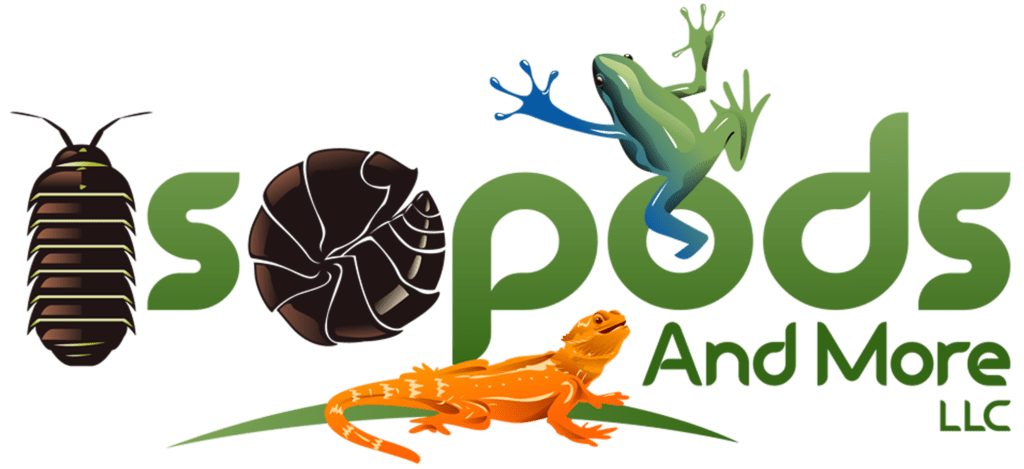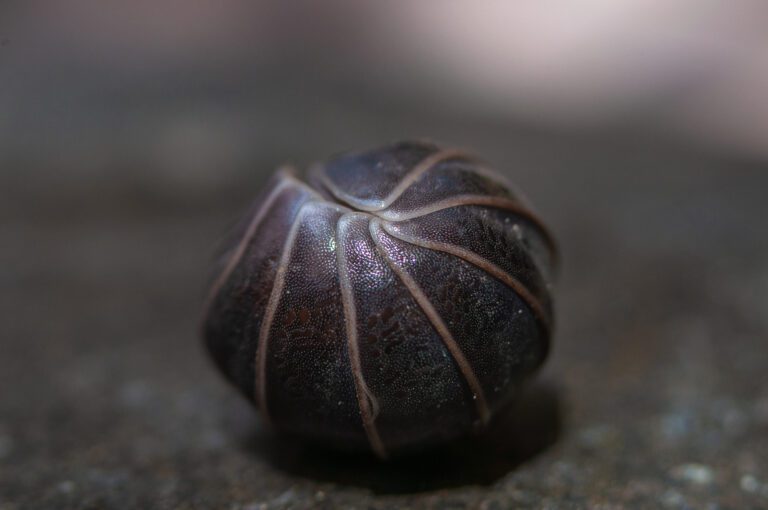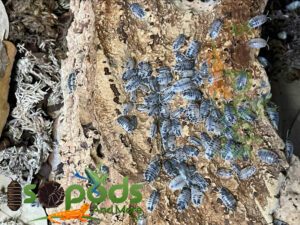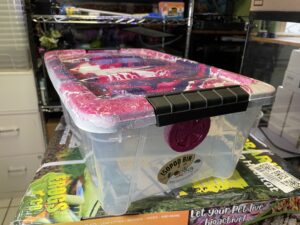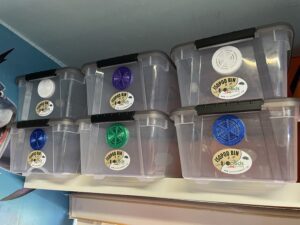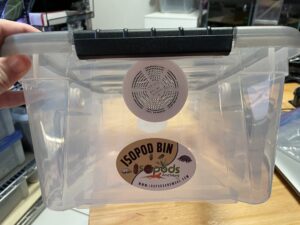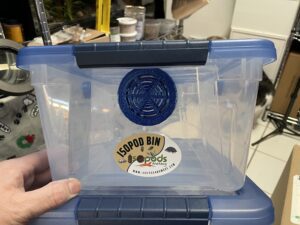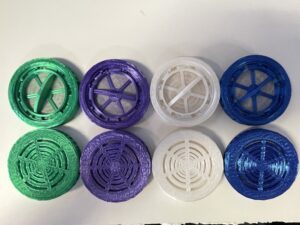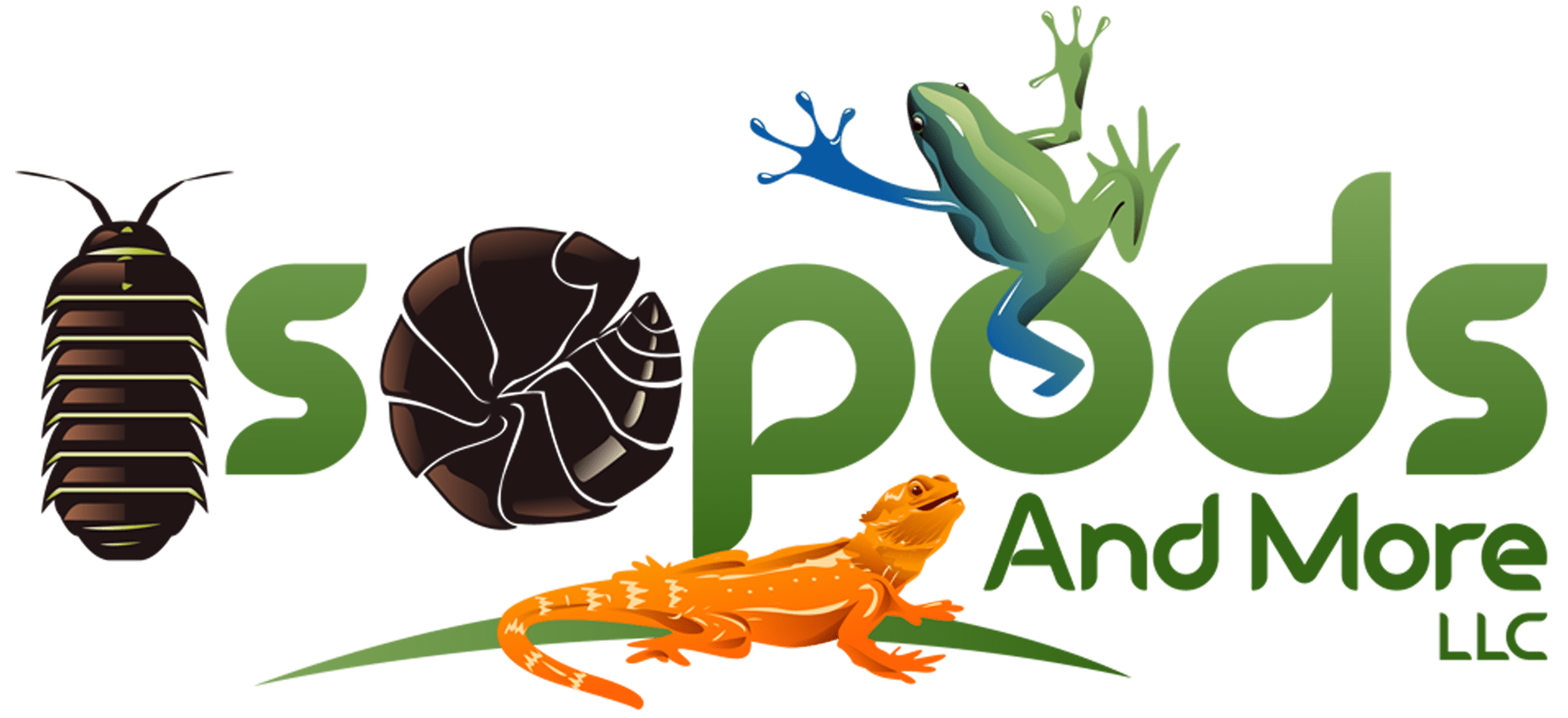Imagine finding isopods right in your backyard or local area. There is no need for complicated expeditions or extensive travel; these fascinating creatures could be just a stone’s throw away. In this article, we will explore the various habitats and environments where isopods can be found, providing a guide to uncovering these incredible critters near you. So, grab your magnifying glass, put on your explorers’ hat, and embark on a journey to discover the world of isopods in your vicinity.

1. Introduction
Welcome to the beautiful world of isopods! These fascinating creatures are often overlooked but have much to offer. Whether you’re a curious nature enthusiast or considering adding isopods to your collection of pets, this comprehensive guide will provide you with all the information you need. From understanding what isopods are to exploring their habitats and finding them near you, let’s dive into the world of these intriguing arthropods.
2. Understanding Isopods
2.1 What are Isopods?
Isopods, also known as woodlice or pillbugs, are small crustaceans that belong to the order Isopoda. These land-dwelling organisms are characterized by their segmented bodies, numerous legs, and ability to curl into a ball for protection. With over 10,000 known species, isopods can vary significantly in size, shape, and coloration.
2.2 Why are Isopods Interesting?
Isopods are fascinating creatures for several reasons. Firstly, their ability to curl up into a ball when threatened is an enchanting adaptation for self-defense. Secondly, they play an essence,. Role in ecosystems as decomposers, breaking down organic matter and contributing to nutrient cycling. Lastly, isopods exhibit a remarkable diversity of behaviors and adaptations, making them a captivating subject of study for scientists and a delightful sight for nature enthusiasts.
2.3 Isopods as Pets
Isopods can also make excellent pets! Their low maintenance requirements, interesting behaviors, and beautiful colors have made them increasingly popular among exotic pet enthusiasts. With proper care, isopods can thrive in a controlled enclosure, providing endless entertainment and educational opportunities. We’ll explore more about keeping isopods as pets later in this guide.
3. Common Species of Isopods
Isopods are found worldwide, with certain species more commonly encountered than others. Let’s take a closer look at some of the common species of isopods you may come across.
3.1 Armadillidium vulgare – Common Pillbug
The Armadillidium vulgare, commonly known as the common pillbug or the roly-poly, is one of the most recognizable isopods. This species is known for its ability to curl into a tight ball when disturbed, providing protection. Common pillbugs are typically gray or brown and can be found in various habitats, including gardens, parks, and forests.
3.2 Porcellio scaber – Rough Woodlouse
The Porcellio scaber, also known as the rough woodlouse, is another common species of isopod. As the name suggests, this species has a rough texture on its exoskeleton. They are typically light brown or gray and have a broader and flatter body than other isopod species. Rough woodlice can often be found in moist environments, such as under logs and rocks.
3.3 Oniscus asellus – Common Shiny Woodlouse
The Oniscus asellus, commonly referred to as the common shiny woodlouse, is a species that stands out due to its glossy black or dark brown exoskeleton. They have a more elongated body shape than other isopods and can sometimes be found in large numbers in damp areas, such as basements, cellars, or under-leaf litter.
3.4 Porcellionides pruinosus – Powdery Isopod
The Porcellionides pruinosus, also known as the powdery isopod, is another exciting species commonly encountered. This species gets its name from the pleasing appearance of its exoskeleton. With a gray or bluish-gray coloration, the powdery isopod can be found in various habitats, including gardens, parks, and urban areas.
4. Isopods in Nature
4.1 Habitats of Isopods
Isopods can be found in many habitats, from forests and meadows to parks and gardens. They are particularly abundant in areas with moist or damp conditions, as they require high humidity to thrive. Isopods are often found under logs, rocks, leaf litter, and decaying vegetation, seeking shelter and foraging for food.
4.2 Ecological Importance
Isopods play a crucial role in ecosystems as decomposers. They feed on decaying plant material and contribute to the breakdown of organic matter, aiding in the recycling of nutrients. By doing so, isopods help maintain soil fertility and contribute to the ecosystem’s overall health. Additionally, they are an essential food source for many other organisms, including birds, reptiles, amphibians, and small mammals.
4.3 Role in Decomposition
One of the most fascinating aspects of isopods is their involvement in the decomposition process. As detritivores, isopods feast on decaying organic matter, accelerating the breakdown process. This not only helps to recycle nutrients but also aids in preventing disease by removing potential breeding grounds for harmful bacteria and fungi. Their activity in decomposition contributes to the balance of nutrients and energy flow in ecosystems.
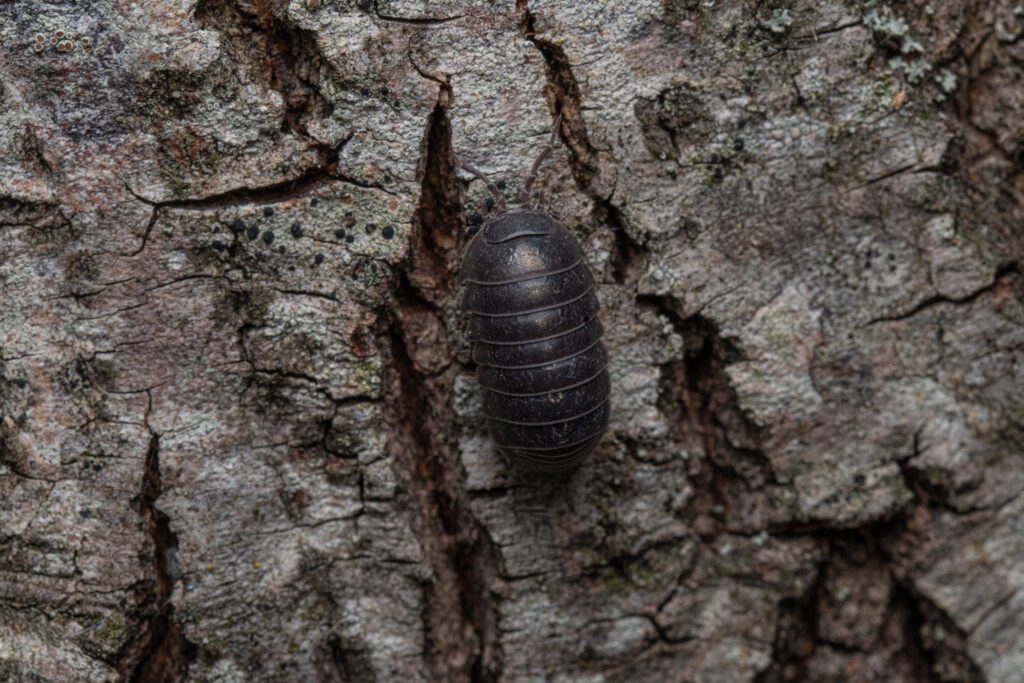
5. Collecting Isopods
If you’re interested in observing or keeping isopods, you may wonder how to collect them responsibly. Here are some important considerations for you to take a look at.
5.1 Safety Precautions
When collecting isopods, it’s essential to prioritize your safety. Wear appropriate protective gear, such as gloves, to prevent any potential allergic reactions or skin irritation. Also, please be careful of your surroundings and be aware of any potential hazards, such as slippery terrain or venomous animals.
5.2 Tools and Equipment
To collect isopods, you’ll need some essential tools and equipment. A small shovel or hand trowel will come in handy for lifting rocks, logs, or leaf litter. A lid or breathable mesh container will allow you to transport the collected isopods safely. A field guide or reference book can also help you identify the different species you encounter.
5.3 Best Time for Collecting
The best time to collect isopods is during their active period, generally in the evening or at night. Isopods are nocturnal creatures more likely to be active and visible during these hours. Additionally, collecting after rainfall or in the early morning when the ground is still moist can increase your chances of finding more isopods.
5.4 Suitable Locations
Isopods can be found in various habitats, but specific locations are more likely to harbor diverse species. Look for areas with abundant leaf litter, decaying logs, and damp soil. Woodland areas, parks, and gardens often provide suitable environments for thriving isopods. Please remember to ask for permission before collecting in private or protected areas.
5.5 Ethical Considerations
When collecting isopods, it’s important to act ethically and responsibly. Please be careful to reduce any disturbances to the habitats and ecosystems in which they reside. Only order a small number of individuals and avoid removing entire populations from a specific location. Remember, isopods are essential to ecosystems, and their presence is vital for maintaining ecological balance.
6. Local Parks and Gardens
If you’re looking for isopods near you, local parks and gardens can be excellent places to explore. Here are some tips for finding isopods in these environments.
6.1 Parks Near Me
Start by researching parks in your area. Look for playgrounds with diverse vegetation, including wooded areas and grassy sections. Take note of any bodies of water, such as ponds or streams, as these can also provide habitats for aquatic isopods. Remember to familiarize yourself with park rules or regulations for collecting or handling wildlife.
6.2 Botanical Gardens Near Me
Botanical gardens are another fantastic option for finding and observing isopods. These curated gardens often provide a range of microhabitats that support various isopod species. Explore the different sections, including wooded areas, rock gardens, and areas with decomposing plant material. Many botanical gardens also offer educational programs and guided tours that can enhance your isopod exploration experience.
6.3 Community Gardens Near Me
Community gardens are not only great for growing plants but also for discovering isopods. These local green spaces often offer a mix of vegetation and may have compost bins or mulched areas attractive to isopods. Could you check with the garden administrators for any restrictions or guidelines regarding collecting and observing wildlife? Engaging with the garden community can also provide opportunities to share knowledge and experiences with fellow enthusiasts.

7. Wildlife Reserves and Conservation Areas
You can visit wildlife reserves and conservation areas near you for a more immersive experience with isopods in their natural habitat. These protected areas can glimpse the diverse ecosystems where isopods thrive. Here’s what you need to know.
7.1 Nature Reserves Near Me
Nature reserves are sanctuaries for a rich diversity of flora and fauna, including isopods. These protected areas often have well-maintained hiking trails and informative signage, making exploring and finding isopods easier while respecting the natural environment. Please remember to follow any guidelines or regulations set forth by the reserve management, as these measures are in place to protect the ecosystem’s delicate balance.
7.2 Wildlife Sanctuaries Near Me
Wildlife sanctuaries are dedicated to providing safe havens for animals, including isopods. These sanctuaries range from small, locally managed areas to more significant, internationally-recognized conservation sites. Join guided tours or accompany knowledgeable staff members who can help you locate and identify isopods while sharing valuable insights into the ecology of these creatures. Remember to observe any restrictions in place to protect the wildlife.
7.3 Conservation Areas Near Me
Conservation areas often encompass large tracts of land and focus on preserving biodiversity. These areas can be home to a wide variety of isopod species. Take advantage of these areas’ trails and observation points to explore different habitats and ecosystems. As always, respect the regulations and guidelines set forth by the conservation area management to minimize your impact on the ecosystem’s delicate balance.
8. Aquatic Environments
Isopods are not limited to land habitats alone. Many species have adapted to life in aquatic environments, including ponds, lakes, wetlands, and coastal areas. Here’s how you can explore marine environments to find these fascinating creatures.
8.1 Local Ponds and Lakes
Ponds and lakes are excellent places to observe aquatic isopods. Look for submerged vegetation, rocks, and fallen logs, as these are common hiding spots for these creatures. You may need to lift stones or carefully inspect vegetation for isopods gently. Using a net or bucket to scoop up a small sample of water and carefully examining it can also reveal the presence of aquatic isopods. Remember to release any captured individuals back into the water after observation.
8.2 Wetlands and Marshes Near Me
Wetlands and marshes are biodiversity hotspots and provide essential habitats for many species, including aquatic isopods. These environments often have stagnant pools, decaying plant matter, and muddy areas where isopods thrive. Explore boardwalks or designated trails that traverse these wetland areas, ensuring not to disturb the delicate balance of these unique ecosystems.
8.3 Coastal Areas Near Me
If you live near a coastal area, consider the potential for finding isopods. Coastal habitats, such as tide pools and rocky shores, can provide unique opportunities to observe a variety of marine isopods. During low tide, explore the rocky crevices and seaweed-covered areas, as these are typical habitats for these creatures. Exercise caution when navigating these areas, and be mindful of any local regulations or protected areas.

9. Online Communities and Forums
Online communities and forums can be a fantastic resource if you need help exploring physical locations or want to connect with other isopod enthusiasts. Here are some platforms where you can engage with like-minded individuals.
9.1 Isopod Enthusiast Groups
Joining isopod enthusiast groups on social media platforms can give you a wealth of knowledge and a sense of community. These groups often offer a space for sharing experiences, asking questions, and showcasing your iPod setups. From beginners to seasoned hobbyists, these groups can be a valuable source of information and support.
9.2 Bug Collectors’ Forums
Bug collectors’ forums are another avenue to connect with individuals passionate about collecting and studying a wide range of invertebrates, including isopods. These forums may have sections or threads dedicated explicitly to isopods, allowing you to learn from experienced collectors, share your observations, and troubleshoot any issues you encounter.
9.3 Online Classifieds and Marketplaces
If you want to acquire isopods to begin your colony or expand your collection, online classifieds and marketplaces can be convenient. These platforms often have listings from reputable breeders or hobbyists who offer various isopod species for sale or trade. Please ensure the sellers have good reputations and follow ethical practices before purchasing.
11. Isopod Breeders and Exotic Pet Stores
For a more reliable source of isopods, consider contacting reputable isopod breeders or visiting exotic pet stores near you. Here’s how you can find them.
11.1 Reputable Isopod Breeders Near Me
Reputable isopod breeders have experienced individuals specializing in breeding and maintaining healthy populations of various isopod species. They often have a wealth of knowledge about isopod care and can provide specific guidance and advice. Could you conduct thorough research to find breeders near you with a reputation for ethical and responsible practices?
11.2 Exotic Pet Stores Near Me
Exotic pet stores sometimes carry isopods as unique and low-maintenance pets. Visit local pet stores specializing in exotic animals to inquire about their available isopod species. Make sure to select a store that prioritizes the health and well-being of their animals. Engage in conversations with knowledgeable staff members who can provide you with valuable information on isopod care and husbandry.
By understanding isopods, exploring their natural habitats, and engaging with like-minded enthusiasts, you can have a fulfilling and educational experience with these incredible creatures. Whether you observe them in the wild, keep them as pets, or share your enthusiasm with others, isopods will captivate your imagination and deepen your appreciation for the wonders of the natural world.
